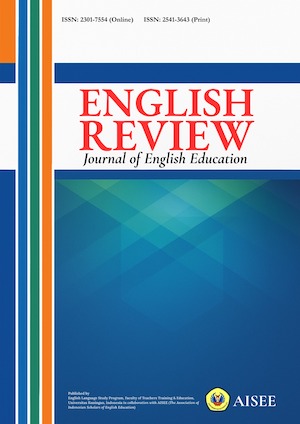APPLYING GENDER DIFFERENCES IN PHONOLOGICAL AWARENESS TO ENHANCE STUDENTS’ READING ABILITY
Abstract
Phonological awareness is the first stage in enhancing kids' reading skills. Phonological awareness provides the foundation for youngsters to associate written letters with their voices, which will help them understand the reading process. Primary school reading abilities provide the groundwork for subsequent reading success. The research technique that utilized to conduct study on phonological awareness and reading ability of male and female primary school pupils is a research method that combines quantitative and qualitative data, commonly known as the Mixed-Method. To obtain quantitative data, this method employs one experimental group, whereas to obtain qualitative data, classroom observation, questionnaires, and interviews conducted on experimental. The subjects of this study were low-grade male and female pupils at primary schools in Cirebon. A basic random sampling procedure is used to determine the samples. There were four types of data gathering procedures used in this study: phonological awareness, observation, questionnaires, and interviews. This study leads to several findings. First, the findings are broadly consistent with previous research in the field of PA in primary children. The study discovered a consistent developmental trajectory in the majority of the PA tasks in favor of primary children. In addition, females outperformed males in some PA subtests. In order to eliminate obstacles to advancing their reading abilities, elementary students must be trained on PA exercises.
All articles published in English Review: Journal of English Education (ERJEE) are licensed under the Creative Commons Attribution 4.0 International License (CC BY 4.0).
Copyright Ownership
Authors retain the copyright of their articles and grant ERJEE the right of first publication. The journal is granted a non-exclusive license to publish, reproduce, and distribute the article in any format, medium, or platform, provided that proper credit is given to the original authors.
License Terms – CC BY 4.0
Under the Creative Commons Attribution 4.0 International License, others are free to:
- Share — copy and redistribute the material in any medium or format
- Adapt — remix, transform, and build upon the material for any purpose, even commercially
As long as they:
- Provide appropriate credit to the original author(s) and source
- Provide a link to the license (https://creativecommons.org/licenses/by/4.0/)
- Indicate if any changes were made
There are no restrictions on the reuse, reproduction, or adaptation of published articles as long as attribution is properly given.
Author Warranties
By submitting a manuscript to ERJEE, authors confirm that:
- The work is original and does not infringe any existing copyright.
- The manuscript has not been previously published and is not under consideration elsewhere.
- All sources and references are appropriately acknowledged.
- Necessary permissions have been obtained for any copyrighted materials used.









